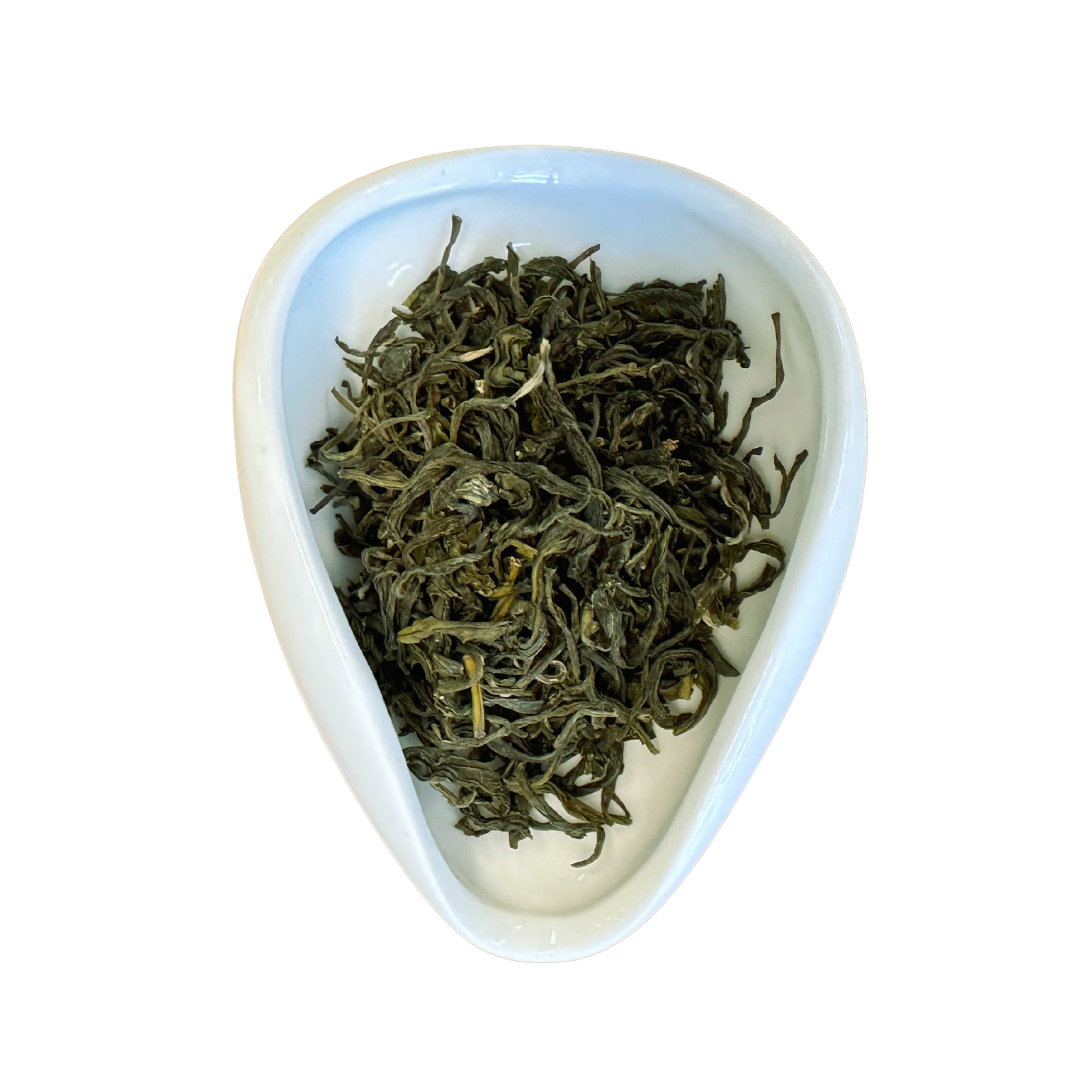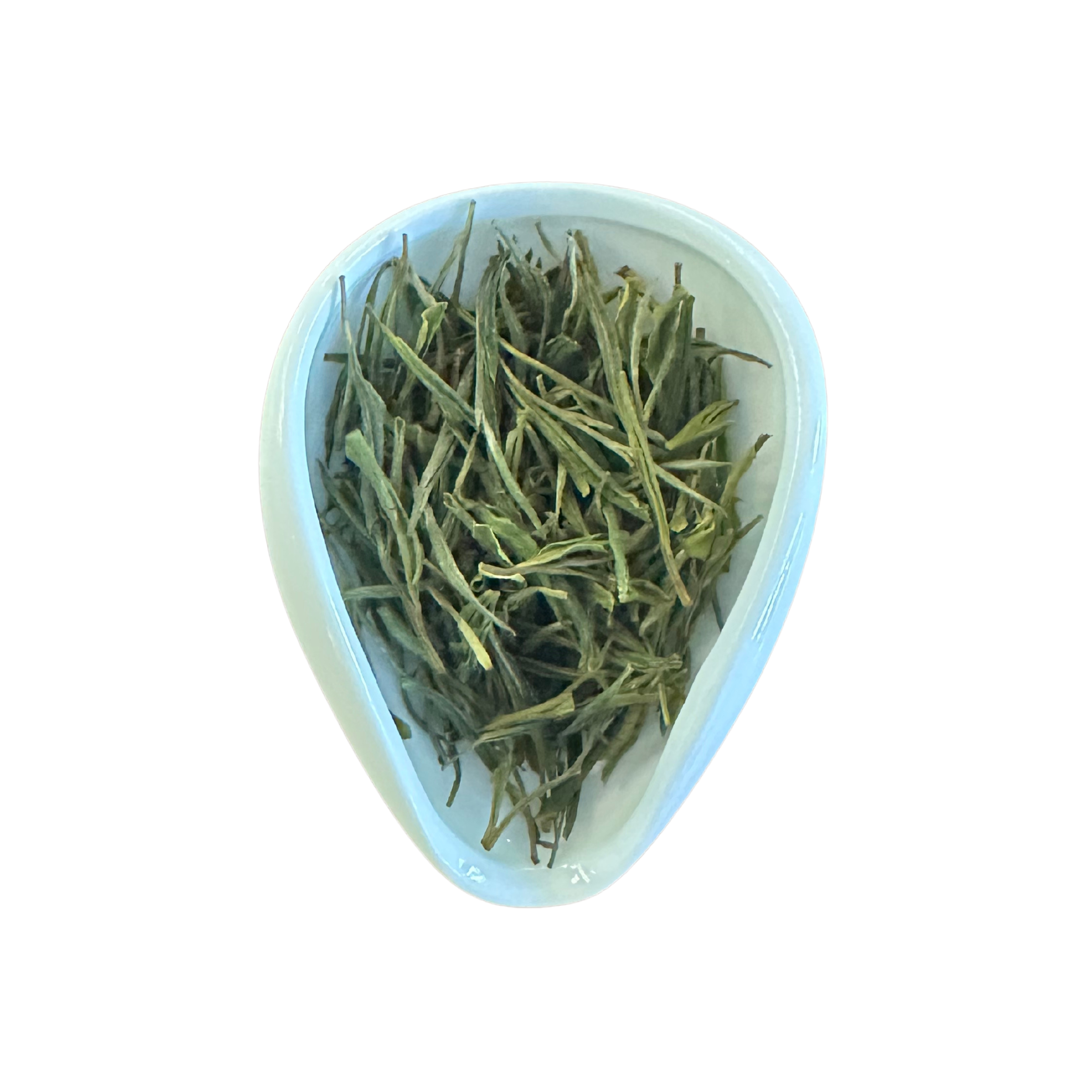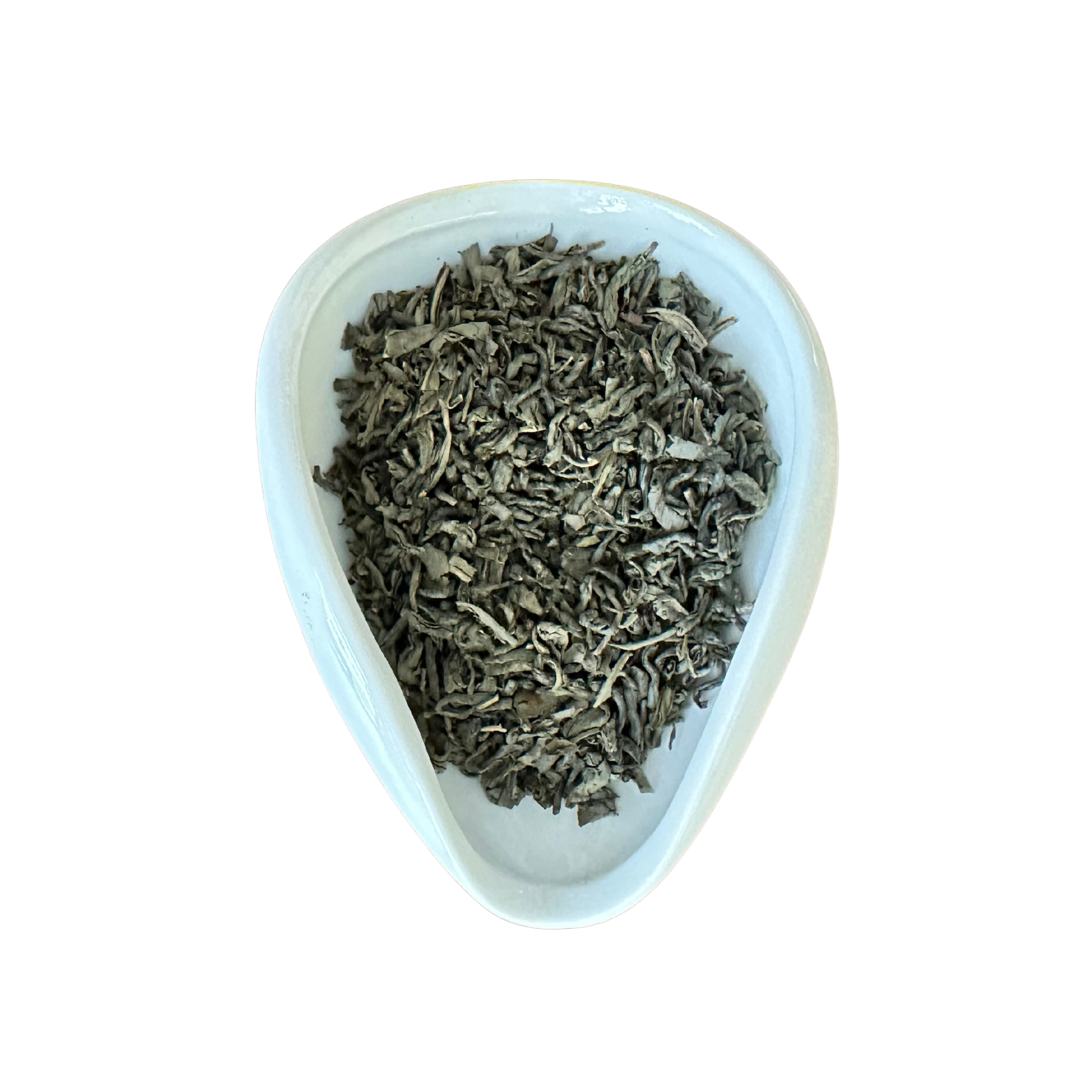-
The name comes from its origin and leaf color. Anji refers to the county in Zhejiang Province, while Bai Cha (White Tea) describes the pale, whitish appearance of the young spring leaves. Although called “white,” it is actually processed as a green tea.
-
Anji Bai Cha is rare, harvested only during a short window in early spring. Its leaves are rich in amino acids, giving the tea a smooth, sweet taste and a light, refreshing character. Its unusual leaf color and delicate flavor set it apart from other green teas.
-
Fresh, smooth, and sweet, with a soft mouthfeel. Orchid-like aroma, bright liquor, and a clean aftertaste that lingers pleasantly.
Recommended Gongfu Brewing Method
Recommended Teaware for Anji Bai Cha:
Use a glass or a gaiwan to admire the slender, pale green leaves as they unfurl. Yixing clay teapots are not recommended, as they may mute the delicate floral fragrance.
Water Temperature:
70–80 °C.
Brewing Instructions:
Leaf-to-water ratio: 1 g of tea per 50 ml of water (1:50).
For example, with a 150 ml gaiwan, use about 3 g of tea.First infusion: Steep for about 50 seconds at 70–80 °C, then pour out completely.
Subsequent infusions: Increase steeping time by 5–10 seconds with each round.
This tea can be brewed at least 5 times, each infusion revealing its sweet, orchid-like fragrance and refreshing taste.
Essential Info
Chinese Name: 安吉白茶 (Simplified) 安吉白茶 (Traditional)
Region: Anji County, Zhejiang Province, China
Harvest Time: 2024
Description:
Anji Bai Cha, or Anji White Tea, is a rare green tea harvested in early spring. Its young leaves appear pale due to high amino acid content, though it is processed as green tea. The finished leaves are long and emerald green, yielding a bright, clear liquor with a delicate floral aroma. Smooth and sweet, with a soft mouthfeel and clean finish, Anji Bai Cha is prized for its rarity and elegance.
Tasting Profile:
Fresh, smooth, and sweet; orchid-like fragrance; bright liquor with a clean, lingering finish.






